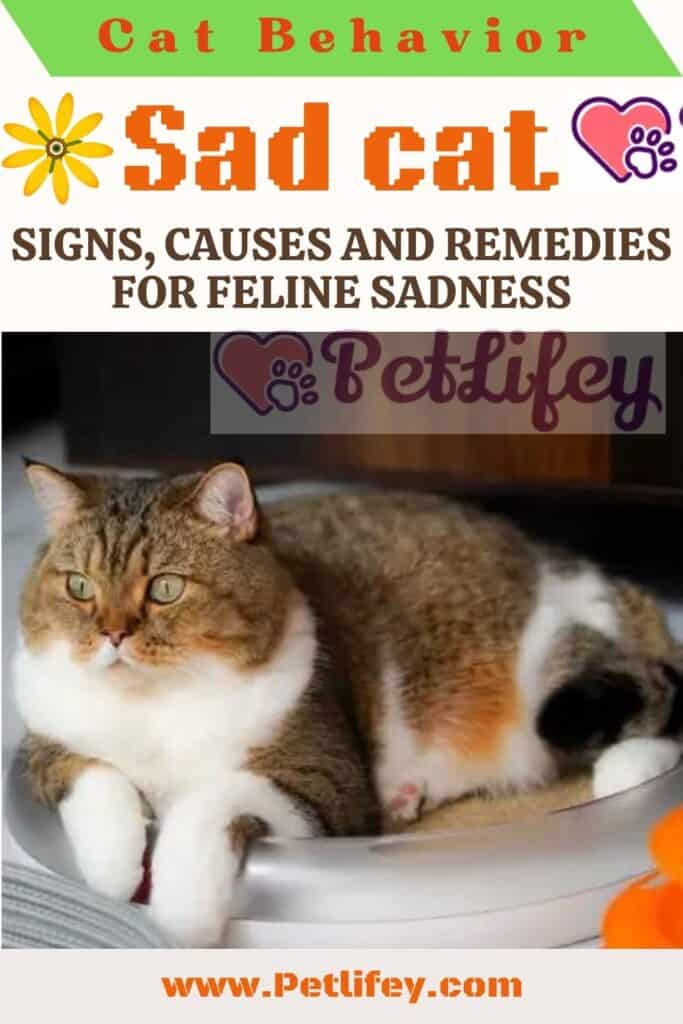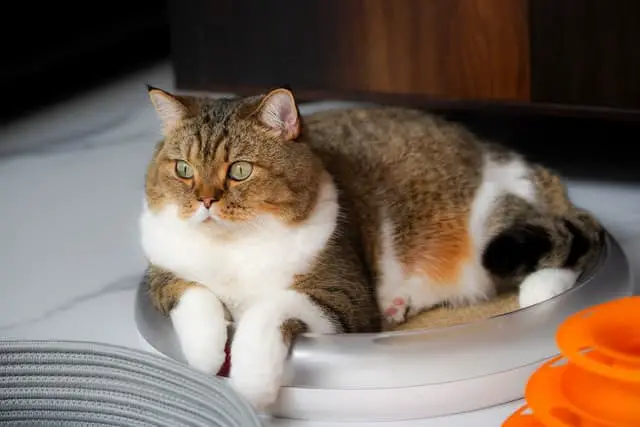
Even the cat can be sad: feline sadness is a common phenomenon, which can be recognized by specific symptoms. Possible causes and remedies for your kitty.
Adopting a pet means taking responsibility for its well-being and happiness: this is why it often happens to wonder if your cat is sad or cheerful, in an attempt to understand if the cat has everything it needs available.
Usually, it is enough to be able to carefully observe the cat’s behavior to grasp the symptoms of its emotional and psychological condition: a sad cat sends unequivocal signals, which is important to know how to read in time to help him recover better.
In this article, we will analyze the symptoms of feline sadness, we will find out what are its most common causes and how to help a sad cat to feel better, to prevent its discomfort from leading to more serious problems.
When the cat is sad: recognizing and resolving feline sadness

Cats are usually independent animals, able to go about their daily lives without the need for someone to constantly look after them. In some cases, however, the proverbial feline independence gives way to a certain sadness in the cat, which needs help to return to being emotionally calm and serene.
Knowing how to recognize any behavioral signs of a sad cat is essential, because through their body language these animals send their own messages and also communicate their discomfort: understanding if the cat is sad can help us prevent the problem from getting worse, turning into a real one. cat’s own depression.
How to tell if the cat is sad? Symptoms and signs
Anyone who has adopted a cat, or maybe more than one, knows very well what we are talking about: having a cat at home is a real gift of life, which fills the days with joy, curiosity and always new games.
But unfortunately, sometimes even the cat can slip into sadness and you have to understand when this happens: here are some of the most common signs to learn to recognize a sad cat.
– The sad cat is often also an inappetent cat : refusing to eat is usually a sign of discomfort in our pets.
– We know that cats are very active, snappy and playful animals: if we notice a change in the cat and see it become apathetic, remaining still for several hours a day, we are faced with a symptom of sadness.
– Cats sleep many hours during the day, but if feline sleep goes beyond 15/16 hours a day it is likely that the animal is sad or even depressed.
– A cat hides when something is wrong: sadness can also cause this typical feline behavior.
– If the cat stops seeking physical contact, avoiding cuddling and “rubbing” even with some discomfort, it could be sad.
– If we notice that the cat is crying for no apparent reason, it is likely that it is communicating its sadness.
– The sad cat wanders aimlessly around the house and sometimes stops and waits for no one knows what in front of the bowl or at the door.
– Finally, pay attention to the appearance of obsessive compulsive behaviors in the cat such as the tendency to lick too much hair or to suck on wool and other objects.
Most Common Causes of Feline Sadness
1. Cats need a stimulating environment precisely because they are curious and attentive animals: be careful not to force him into a small and narrow space, because to be happy, the cat must be able to jump, climb, observe.
2. The cat is by nature an animal of habit, which does not tolerate radical changes in its routine: the birth of a child, the adoption of a new pet, the presence of guests, a move can be real traumas for kitty.
3. In kittens cats it is possible to find sadness due to a too early separation from the mother cat, at the same time the latter can experience the detachment from the kittens badly.
4. Trauma, accidents, abuse, surgery can make the cat sad.
The cat is sad: how to fix it?
Cat sadness can become chronic and make our cat potentially depressed, so it is important to know what to do to help him get better.
The main thing is to give the house cat adequate stimulation: the cat is usually sad because of boredom and for this reason playing with him is the first step to take.
In the hours when you are not at home and leave the cat alone, get him games and pastimes that are suitable for him: balls, plush mice, scratching posts, structures to climb on are just a few examples of cat toys that can distract the cat.
Against lack of appetite, on the other hand, you can try to spoil the sad cat a little by offering him his favorite foods and even some small greedy snacks.
Finally, if you realize that your cat’s sadness has persisted for too long, take him to the vet who will be able to evaluate the best treatment for the specific situation.






